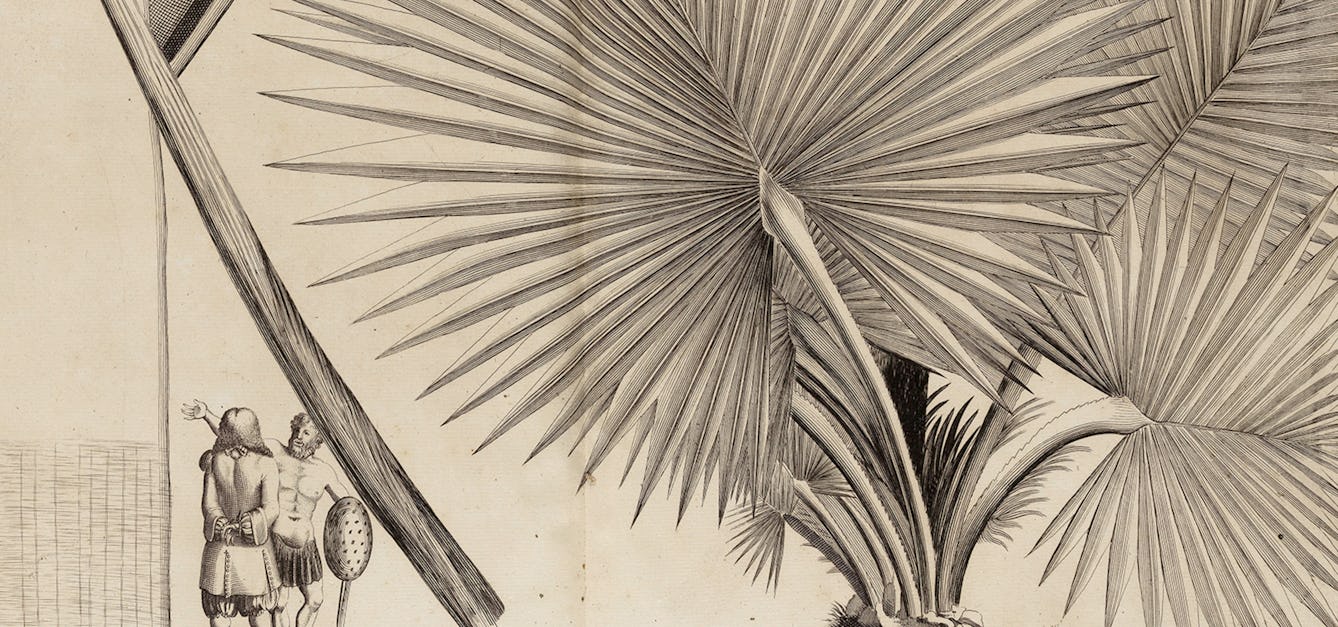Stories

- Article
Diagnosed bipolar, prescribed lithium
In the first part of a series looking into lithium, Laura Grace Simpkins recounts the beginning of her troubled relationship with this mysterious drug.

- Article
Does mass media pave the way to fascism?
In the aftermath of World War II, psychoanalysts found the psychological roots of authoritarianism closer to home than was comfortable.

- Article
Indian botanicals and heritage wars
Colonial botanical texts, as astonishingly beautiful as they are, may cast very dark shadows.
Catalogue

- Books
- Online
Observations on poisons; and on the use of mercury in the cure of obstinate dysenteries / by Thomas Houlston.
Date: 1784
- Books
- Online
Observations on poisons : and on the use of mercury in the cure of obstinate dysenteries / by Thomas Houlston.
Houlston, Thomas, 1745-1787.Date: 1787
- Books
- Online
On potassium permanganate as an antidote to vegetable poisons / by H.C. Wood.
Wood, Horatio Curtis, 1841-1920.Date: 1894
- Books
- Online
Du traitement de la colique de plomb par la belladone / par F. Gauch.
Gauch, Félix.Date: 1881
- Books
- Online
A contribution to the haematinic properties of dialized iron : being extracts from communications read before the Boston Society of the Medical Sciences and the Boston Society for Medical Observation / by Robert Amory.
Amory, Robert, 1842-1910.Date: 1879
![Atropa belladonna L. Solanaceae. Deadly nightshade. Dwale. Morella, Solatrum, Hound's berries, Uva lupina, Cucubalus, Solanum lethale. Atropa derives from Atropos the oldest of the three Fates of Greek mythology who cut the thread of Life (her sisters Clotho and Lachesis spun and measured the thread, respectively). belladonna, literally, means 'beautiful lady' and was the Italian name for it. Folklore has it that Italian ladies put drops from the plant or the fruits in their eyes to make themselves doe-eyed, myopic and beautiful. However, this is not supported by the 16th and 17th century literature, where no mention is ever made of dilated pupils (or any of the effects of parasympathetic blockade). Tournefort (1719) says 'The Italians named this plant Belladonna, which in their language signifies a beautiful woman, because the ladies use it much in the composition of their Fucus [rouge or deceit or cosmetic] or face paint.' Parkinson says that the Italian ladies use the distilled juice as a fucus '... peradventure [perhaps] to take away their high colour and make them looke paler.' I think it more likely that they absorbed atropine through their skin and were slightly 'stoned' and disinhibited, which made them beautiful ladies in the eyes of Italian males. Distribution: Europe, North Africa, western Asia. Culpeper (1650) writes: 'Solanum. Nightshade: very cold and dry, binding … dangerous given inwardly … outwardly it helps the shingles, St Antonie's Fire [erysipelas] and other hot inflammation.' Most of the 16th, 17th and 18th century herbals recommend it topically for breast cancers. Poisonous plants were regarded as 'cold' plants as an excess of them caused death and the body became cold. They were regarded as opposing the hot humour which kept us warm and alive. Poultices of Belladonna leaves are still recommended for muscle strain in cyclists, by herbalists. Gerard (1633) writes that it: 'causeth sleep, troubleth the mind, bringeth madnesse if a few of the berries be inwardly taken, but if more be taken they also kill...'. He was also aware that the alkaloids could be absorbed through the skin for he notes that a poultice of the leaves applied to the forehead, induces sleep, and relieves headache. The whole plant contains the anticholinergic alkaloid atropine, which blocks the peripheral actions of acetylcholine in the parasympathetic nervous system. Atropine is a racemic mixture of d- and l- hyoscyamine. Atropine, dropped into the eyes, blocks the acetylcholine receptors of the pupil so it no longer constricts on exposure to bright light - so enabling an ophthalmologist to examine the retina with an ophthalmoscope. Atropine speeds up the heart rate, reduces salivation and sweating, reduces gut motility, inhibits the vertigo of sea sickness, and is used to block the acetylcholine receptors to prevent the effects of organophosphorous and other nerve gas poisons. It is still has important uses in medicine. Atropine poisoning takes three or for days to wear off, and the hallucinations experienced by its use are described as unpleasant. We have to be content with 'madness', 'frenzie' and 'idle and vain imaginations' in the early herbals to describe the hallucinations of atropine and related alkaloids as the word 'hallucination' in the sense of a perception for which there is no external stimulus, was not used in English until 1646 (Sir T. Browne, 1646). It is a restricted herbal medicine which can only be sold in premises which are registered pharmacies and by or under the supervision of a pharmacist (UK Medicines and Healthcare Products Regulatory Agency (MHRA)). Photographed in the Medicinal Garden of the Royal College of Physicians, London.](https://iiif.wellcomecollection.org/image/B0008945/full/282%2C/0/default.jpg)








